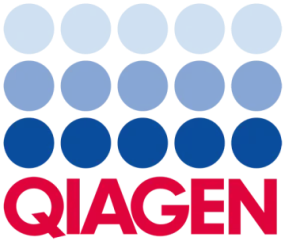
QIAcuityDx streamlines clinical testing by providing highly precise, absolute quantitation of target DNA and RNA, supporting applications with less invasive liquid biopsies. These capabilities make it an ideal tool for monitoring cancer progression, complementing routine cancer diagnoses, which are typically performed using Next Generation Sequencing (NGS).
QIAGEN is rapidly expanding the application menu available on QIAcuityDx-System, with a new BCR::ABL assay for oncohematology planned for FDA submission in 2025. The platform also provides immediate access to QIAGEN’s full portfolio of research-use products and applications via its GeneGlobe platform. QIAGEN has already signed three partnerships with pharmaceutical companies to develop companion diagnostics on the QIAcuityDx, moving digital PCR into precision medicine. In addition, QIAGEN plans to further enhance the future assay portfolio by collaborating with third parties, who will develop their own assays for the platform.
“With the QIAcuityDx, we are bringing our precise and efficient digital PCR platform into the clinical space, reflecting our commitment to meeting the evolving needs of clinical labs in monitoring and minimal residual disease testing during patient treatment,” said Fernando Beils, Senior Vice President and Head of the Molecular Diagnostics Business Area at QIAGEN. “By integrating all necessary functions into a single device, we are simplifying workflows and reducing operational costs for clinical labs, while instilling confidence in highly accurate and reliable diagnostic results.”
“The QIAcuityDx is a compact benchtop technology that doesn’t take up much space and is very easy to use. The run is short, so you get results really fast. It provides a report that is digestible, translatable, and meaningful, and makes it easy to make decisions,” said Dr. Kate Brown, translational research manager at The Christie NHS Trust in Manchester, United Kingdom, when asked about the clinical implications of QIAcuityDx for patients. Dr. Brown has used QIAcuityDx as part of a collaborative lung cancer study with QIAGEN.
“It enables us to improve the testing workflow. It allows us to quantify what’s happening, to gain true insight into how the tumor is changing, how the molecular basis of that tumor is responding to treatment. And that is something that other existing technologies are unable to offer,” she added.
The QIAcuityDx platform is an IVD medical device that integrates partitioning, thermocycling, and imaging into a streamlined 5-plex workflow within a single instrument, eliminating the need for additional equipment. Capable of processing up to four nanoplates simultaneously, it reduces lab space requirements, servicing needs, and operator time. Labs familiar with QIAcuity can expect the same easy and fast nanoplate-based workflow, which disperses a sample into thousands of tiny partitions and then reads reactions simultaneously to quantify even the faintest signals from DNA and RNA.
QIAcuityDx’s technology enables higher throughput, allows for imaging of partitions, improves precision and sensitivity, cuts processing times to just two hours, and reduces the risk of cross-contamination – crucial factors for applications like oncology and infectious diseases.
QIAcuityDx software is designed for diagnostic use, featuring a user-friendly interface and comprehensive audit trail compliant with modern lab requirements. It includes two modes:
- An IVD mode offering validated assay plug-ins and automated analysis.
- A Utility Mode, providing flexibility to laboratories for their laboratory-developed tests (LDTs) and research applications.
The QIAcuity-DX platform supports continuous sample loading and flexible scheduling, accommodating urgent testing needs without compromising patient results. To ensure diagnostic compliance and meet clinical customer needs, QIAcuityDx will include:
- A bi-directional LIMS (Laboratory Information Management System) interface for seamless integration with electronic patient records.
- QIAcuityDx-optimized universal master mix and nanoplates manufactured under strict regulatory standards.
- A validated installation process supporting lab compliance with an audit-ready report.
- 5-channel calibration enhancing image processing and reproducibility.
The adoption of QIAcuity digital PCR research instrument is strong, with more than 2,000 cumulative placements at the end of 2023 and citations in over 450 publications. Key customers include pharmaceutical and biotechnology companies, academic and research organizations and forensic laboratories. QIAcuityDx will now address additional customer segments, further strengthening the footprint of the QIAcuity family.
For more information on QIAcuityDx and to enhance your lab’s diagnostic capabilities, visit






